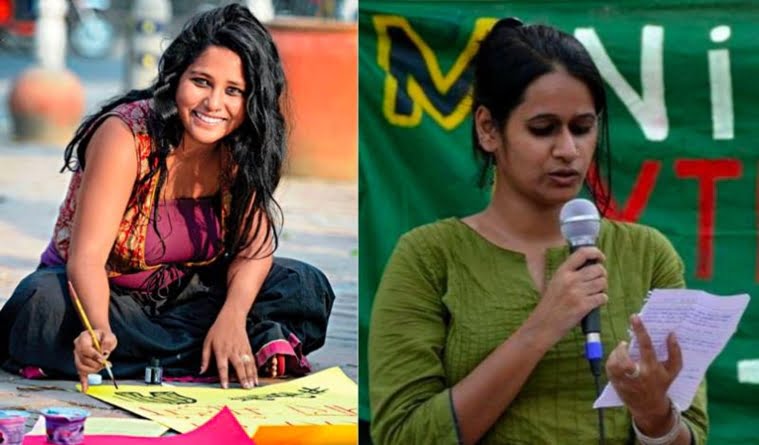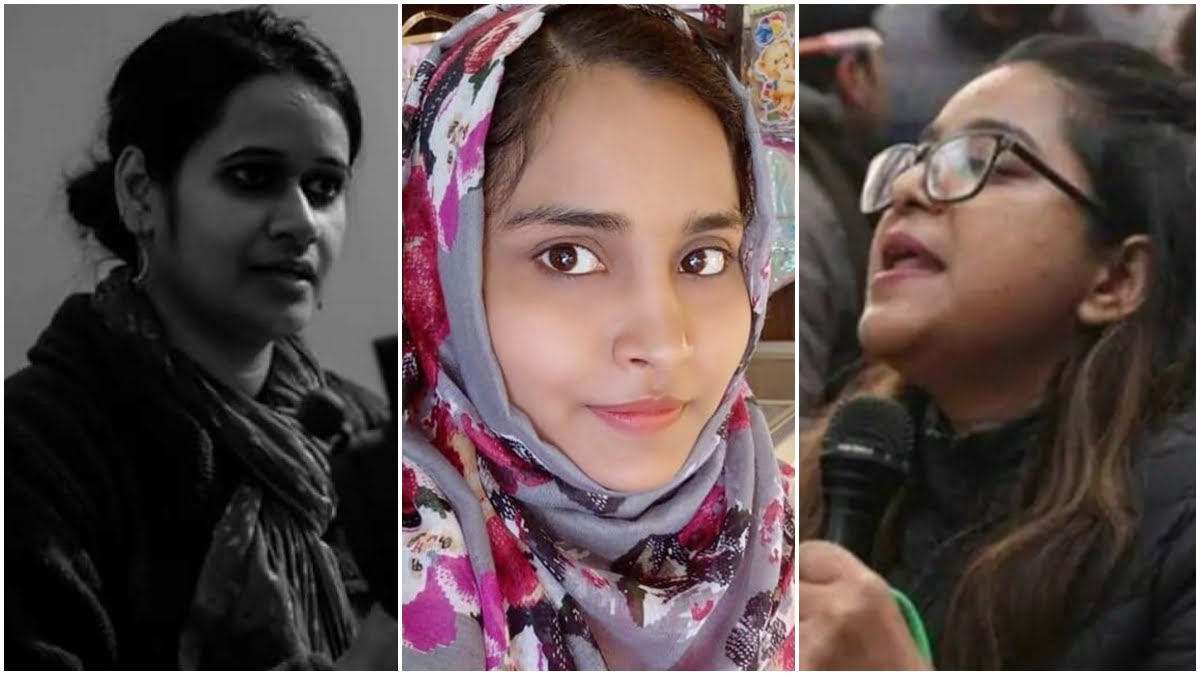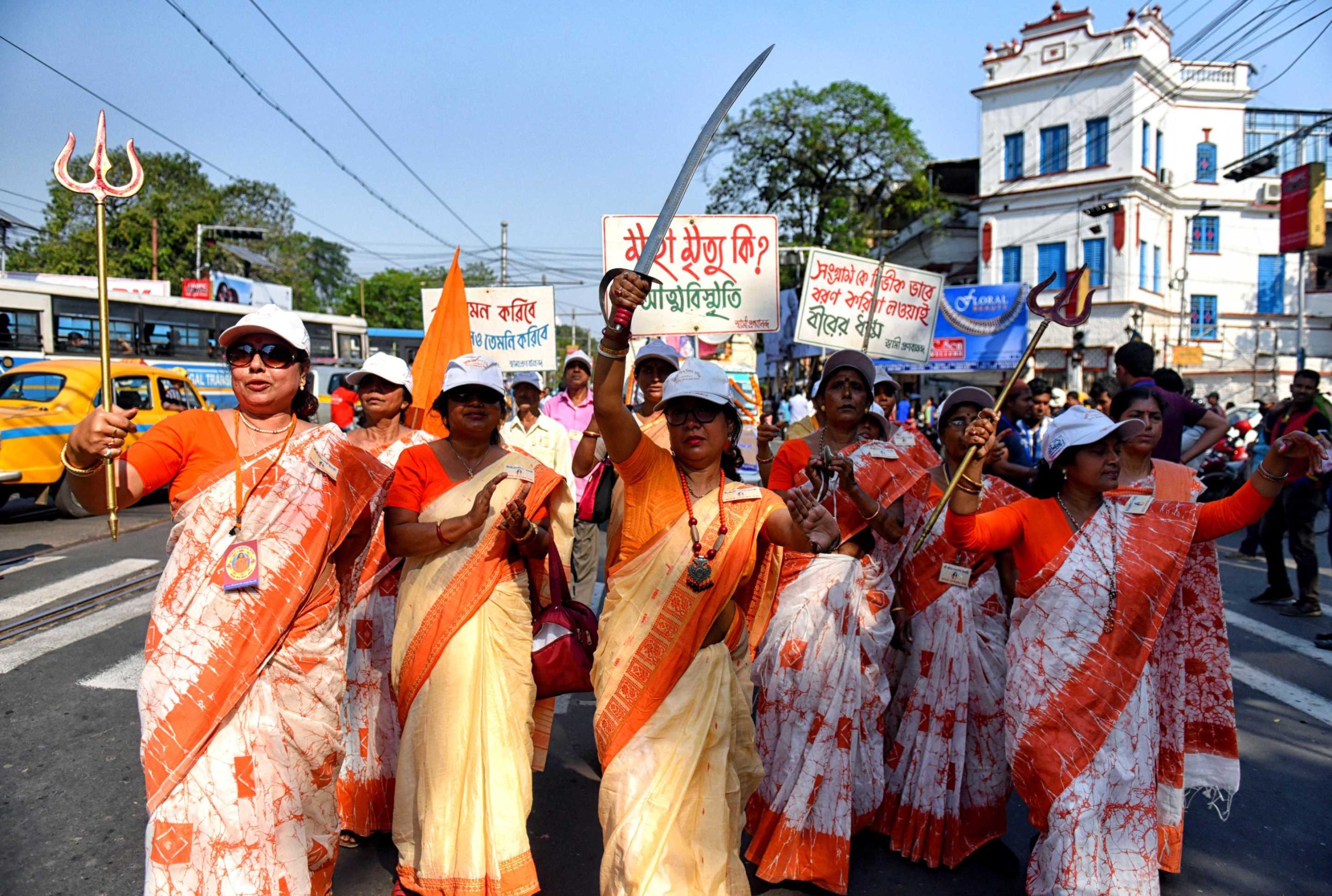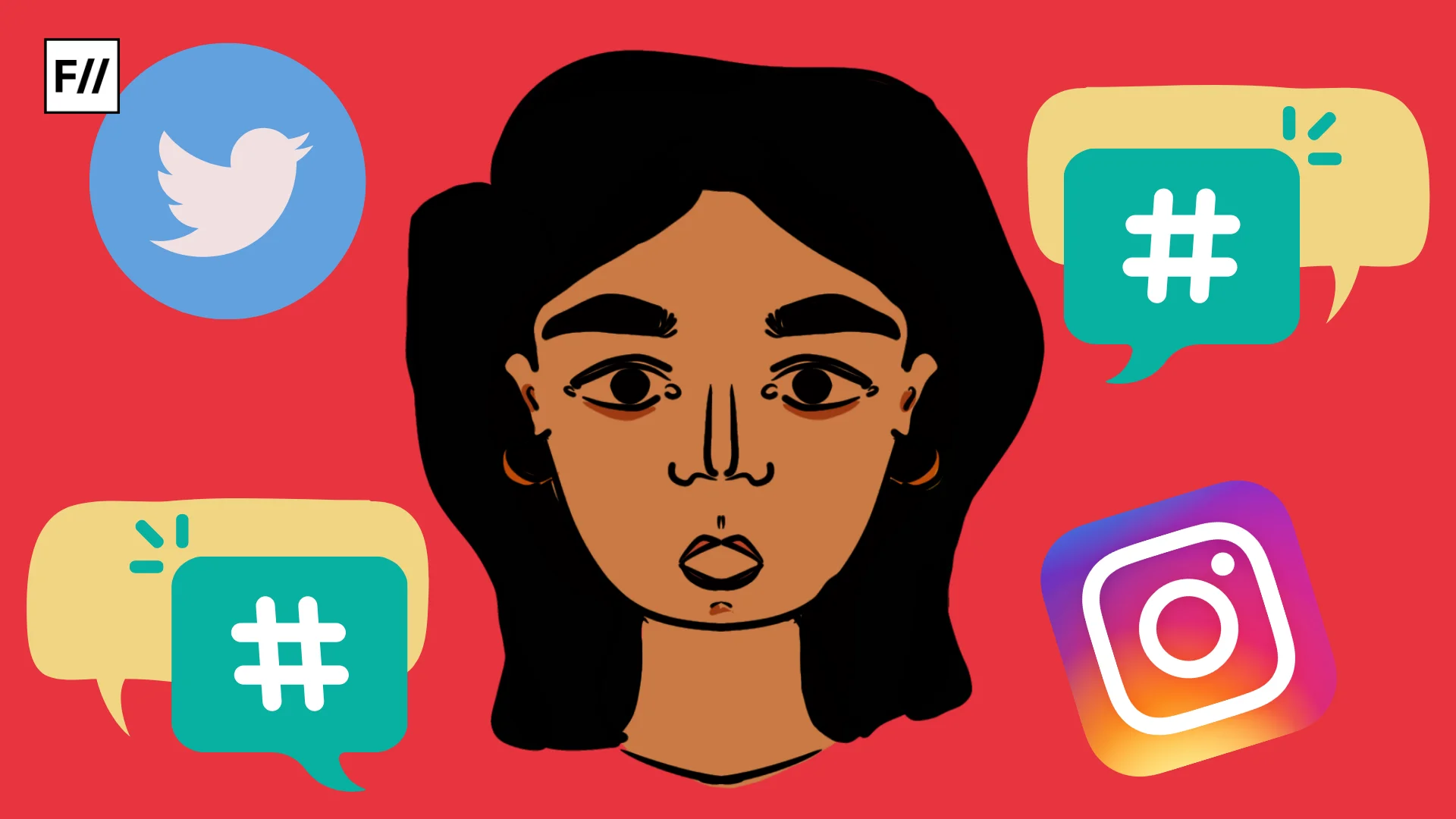On June 23, 2020, the Delhi High Court granted student activist Safoora Zargar bail on “humanitarian grounds” upon certain provisional conditions. Amid the ongoing COVID-19 pandemic, Zargar, 27 was arrested on April 10 on charges on charges of blocking a road and obstructing traffic during the anti-Citizenship Amendment Act (CAA) protests in Delhi. The M.Phil student at Jamia Milia Islamia was granted bail but rearrested under the draconian Unlawful Activities (Prevention) Act (UAPA) on conspiracy charges over the North-East Delhi riots that marked the beginning of 2020. On June 22, solicitor general Tushar Mehta, appearing on behalf of the Delhi Police, opposed the bail plea of Safoora Zargar, and argued that “39 deliveries have taken place in Tihar jail over the last 10 years”. While the bail that was awarded to Zargar the next day was much needed, it should not be forgotten that she was denied bail four times before and now, she was granted bail on “humanitarian grounds” considering her state of pregnancy, and not on the merit that to dissent and protest is not unlawful, leaves out others arrested under the UAPA amid the raging pandemic.

On May 23, the Delhi Police arrested Devangana Kalita and Natasha Narwal of Pinjra Tod, for their alleged role in the February anti-CAA sit-in protests in Delhi’s Jaffrabad. Kalita (30) and Narwal (32), who were reportedly arrested from their homes, are students of Jawaharlal Nehru University (JNU). On April 9, a 28-year-old MBA graduate Gulfisha Fatima was arrested for her alleged connection with the communal riots in February. Her Habeas Corpus petition was rejected by the Delhi high court in the same week as Safoora Zargar was granted bail.
On May 23, the Delhi Police arrested Pinjra Tod founding members Devangana Kalita and Natasha Narwal of Pinjra Tod, for their alleged role in the February anti-CAA sit-in protests in Delhi’s Jaffrabad. Kalita (30) and Narwal (32), who were reportedly arrested from their homes, are students of Jawaharlal Nehru University (JNU).
Also read: Pinjra Tod Women Activists Behind Bars While Kapil Mishra Walks Away Scot-Free
A Delhi court granted the two activists bail, a day after they were arrested. However, the Special Investigation Team (SIT) of the Delhi Crime Branch moved an application seeking their arrest again “on charges of attempt to murder, rioting and criminal conspiracy”. They were sent to 14-days judicial custody from where Narwal was arrested by the Special Cell under UAPA for alleged conspiracy behind the February riots in North-East Delhi.
Both Kalita and Narwal are student women human rights defenders and founding members of ‘Pinjra Tod’, a collective of women students and college alumni that was formed in August 2015 to predominantly mobilise against the patriarchal curfew code for female students in Delhi’s universities and colleges.
“The charges on all the recently arrested anti-CAA activists are completely baseless. The government clearly feels threatened by a strong student movement critical of its neoliberal policies, privatising education and the democratic mass movement against CAA, NRC and NPR,” a Pinjra Tod member was quoted by several publications. “This is just criminalisation of dissent. The police is simply trying to intimidate people…. So, the cops might be thinking why not use this time to flex our muscles,” said another Pinjra Tod activist.
If we look at the above incidents, what is evident is the pattern of a muscle-flexing, arm-twisting, whip-cracking police force clamping down on dissent, the right to peacefully protest and the freedom of expression. Why are women student activists or women’s organisations a threat to the State so much, that it is willing to go against “humanitarian” codes of conduct during a pandemic to charge and arrest women and place them in prisons? The arrest of the members of Pinjra Tod, among others, is a case study of the same.
Autocratic regimes worldwide are known to be intolerant of dissent and wield their whip on women, as they are perceived to be dangerous if not tamed, controlled or silenced. And what better than the police force to co-opt in a blatant show of power? The male-dominated “force” is perceived to be composed of corrective might in popular imagination and function as the mechanism of repression and regression in reality. In Betraying Big Brother: The Feminist Awakening in China, academic and journalist Leta Hong Fincher describes how the arrest of five women by the Chinese government in March 2015 became an important turning point in the feminist movement in China. One factor that has stuck out in the India’s anti-CAA protests from December 2019 through March is the role of women. From the Dadis of Shaheen Bagh to the likes of Zargar, Kalita, Narwal, Gulfisha Fatima, among others — women have protested against the “fundamentally discriminatory”, anti-Muslim CAA, which is a violation of human rights treaties. And by doing so, they took on the system that guards the totalitarian gaze of the Modi regime which is fashioned on the optics and narrative of hyper-masculinity.
Both in numbers and dynamics — right from the prime minister to the state and party heads, it’s the image of power-whipping, power-talking and powerful-looking male leaders that stands out. Related narratives include the chest-thumping “56 inch”, “purusharth” loosely translated as “the masculine force required to realise the ideal” .among others.
Women Under Curfew
Pinjra Tod that is a largely organised mobilisation against repression of women in college hostels and paying guest accommodation as manifested across institutional and residential spaces in Delhi—a metropolis but also a microcosm of North India. It is a collective against the larger institutionalised patriarchy that issues diktats controlling and caging women’s choices, bodies and movements. Who are the agents and gatekeepers of patriarchy? The warden, guard, matron, owners, the landlord and the landlady—the nexus of bourgeoise, feudalistic, landed collective that operates on a patriarchal code of curfew against women’s mobility and liberty. The mobility to be out beyond 8 pm, the liberty to bring over a boyfriend or guy friends at the hostel or PG, the liberty to socialise or be out at night. The trope to view and project women as the “weaker/fairer” sex who needs to be protected and preserved. And above all, women are asked to not “ask” or attract offenders through clothing and carriage, or not visit a bar if a woman so wishes. In short, to not cross the “dehleez” or boundary line of maryada or honour—the Lakshman Rekha in Ramrajya—in skirt or spirit.
Several complaints filed by residents from the riot-affected area have thus far been reportedly ignored by the Delhi police — this includes complaints against various BJP leaders, including Kapil Mishra, alleging their direct role in instigating targeted violence. Institutionalised police force is the moral gatekeeper that acts arm-in-arm with such agents.
The State applies similar codes when it comes to controlling women’s voices. Why is the nexus of Pinjra Tod, the involvement of other women activists and the anti-CAA protests important? The site of protest itself is a radicalised space that has been reclaimed by women’s movements at various timelines and across continents. If in China 2015, women reclaimed subways, it was the public spaces amid Delhi’s ghettoes in that women claimed in India 2020. This shift from the domestic space, the line of maryada, to reclaim the streets brooks consternation from the State. Closer home in India, spearheaded by theatre artist and feminist activist Mallika Taneja, the movement called ‘Women Walk At Midnight‘ organises regular midnight walks in various parts of the city in an attempt to bridge the gaps in women’s access to public spaces.
Several national and international human rights organisations and social media groups were vocal for the release of Safoora Zargar and others detained during the pandemic given the severe health risks among others. On the other side, The Caravan reported that several complaints filed by residents from the riot-affected area have thus far been ignored by the Delhi police — this includes complaints against various BJP leaders, including Kapil Mishra, alleging a direct role in instigating targeted violence. Institutionalised police force is the moral gatekeeper that acts arm-in-arm with such agents.
Why India Needs A Gender-Sensitive Police Force
Numerous instances of police brutality were reported during the lockdown, where some of the force members were seen lathi-charging citizens enforcing lockdown impositions through might. “Data from 39 countries show that the presence of women police officers correlates positively with reporting of sexual assault, which confirms that recruiting women is an important component of a gender-responsive justice system,” noted a United Nations Women report in 2011-’12 titled “Progress of the World’s Women: In Pursuit of Justice”.
“There is a strong belief that combat, by nature, is a male occupation; that the police force is a male domain and therefore unsuitable to the female physique and temperament,” says the 2018 Status of Policing on India report on citizens’ attitudes towards the police.
If anything, the Modi government’s patriarchal rhetoric of motherhood and glorification of women as mothers, sisters and wives is aligned with the politics of repression of women’s voices—especially non-conformist ones.
Not long back, the Delhi Police was a silent spectator when violence broke out in the premises of JNU, leaving JNUSU president Aishe Ghosh injured. In order to silence the women who dissent — perceived as a threat to order — the police is complicit in the silence of the State on matters of personal liberty and dignity, human rights, rights to safe health and Freedom of Expression.
In 2017, Pinjra Tod had responded to ABVP’s slogan “Bharat Mata Ki Jai” (victory to mother India) with “Bharat Ki Mata Nahi Banege” (We will not be mothers of India), further shouting “Mahila Mange Azadi…” (Women demand freedom) from both “baap” (father) and “khap” (community leaders); and one may add to that the punishing police.
About the author(s)
Sanhati Banerjee is a Kolkata-based independent journalist with special interests in literature, culture and gender.





helpful post sir…Logicalfact
wow! really useful post sir…paheliyaninhindi